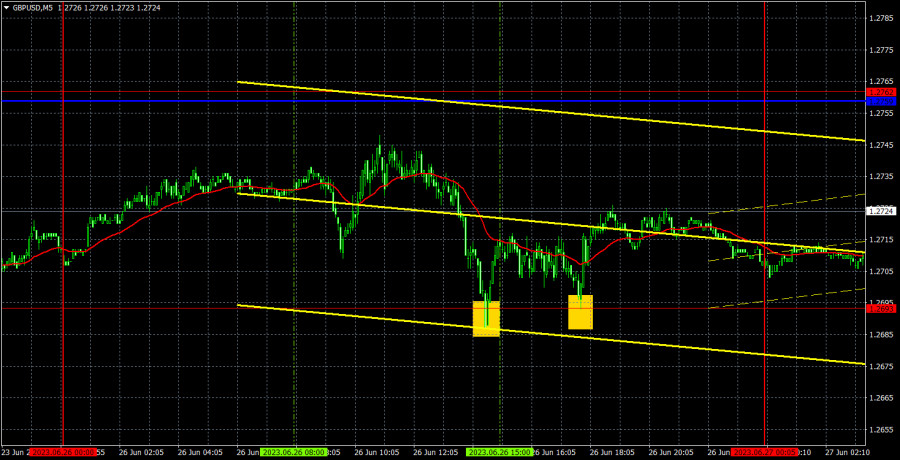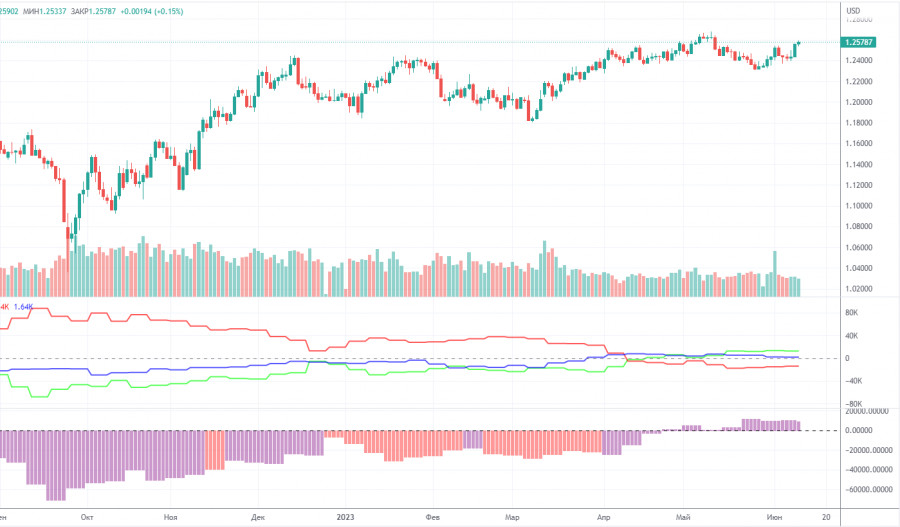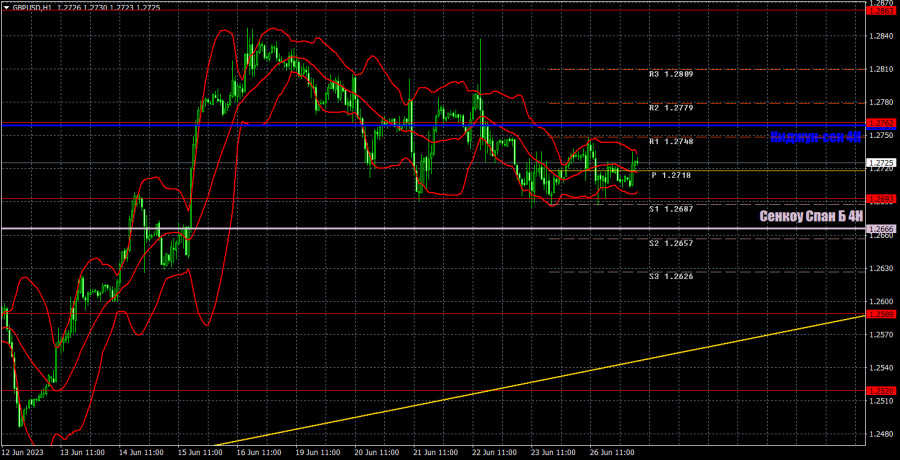5M chart of GBP/USD
GBP/USD barely moved in a quiet start to the week. The pair was nearly in a flat phase for most of the day, but the pound managed to dip to the level of 1.2693. However, it failed to surpass this mark and is currently located between the Kijun-sen and Senkou Span B lines. The pound has not breached the ascending trendline, so we would say that the uptrend is still intact even after a week of correction.
As we have already mentioned, the pound is resisting the dollar's gains more successfully, as it is reluctant to fall, but rises with much enthusiasm. Such dynamics often raise questions about the rationale and justification of this process. For example, last week, the pound had an excellent opportunity to show growth as the Bank of England raised the key interest rate by 0.5%, which was quite surprising. However, even with all the necessary grounds for growth, the pound did not rise. Therefore, it is still extremely difficult to consider all of the pound's movements as logical and justified. There are hardly any important reports or events this week, but some of them may stir some market reaction. However, the market itself seems to be looking in only one direction. It wouldn't be surprising to see the British currency rally out of the blue.
COT report:
According to the latest report, non-commercial traders opened 25,100 long positions and closed 14,600 short ones. The net position increased by 39,700 in just a week and continues to grow. Over the past 9-10 months, the net position has been on the rise. We are approaching a point where the net position has grown too much to expect further growth. We assume that a prolonged bear run may soon begin, even though COT reports suggest a bullish continuation. It is becoming increasingly difficult to believe in it with each passing day. We can hardly explain why the uptrend should go on. However, there are currently no technical sell signals.
The pound has gained about 2,500 pips. Therefore, a bearish correction is now needed. Otherwise, a bullish continuation would make no sense. Overall, non-commercial traders hold 54,900 sell positions and 101,500 long ones. Such a gap suggests the end of the uptrend. We do not see the pair extending growth in the long term.
1H chart of GBP/USD
In the 1-hour chart, GBP/USD maintains a bullish bias, although it is correcting at the moment. The ascending trend line serves as a buy signal but I believe that further growth of the British currency is groundless. The pound sterling has been climbing for too long and downward corrections are short-lived (like in the last few days). Judging by the technical indicators, we have an uptrend. You should avoid selling the pair without proper signals.
On June 27, trading levels are seen at 1.2349, 1.2429-1.2445, 1.2520, 1.2589, 1.2693, 1.2762, 1.2863, 1.2981-1.2987. The Senkou Span B (1.2666) and Kijun-sen (1.2759) may also generate signals when the price either breaks or bounces off them. A Stop Loss should be placed at the breakeven point when the price goes 20 pips in the right direction. Ichimoku indicator lines can move intraday, which should be taken into account when determining trading signals. There are also support and resistance which can be used for locking in profits.
On Tuesday, there are no significant events lined up in the UK, while in the US, reports on durable goods orders and new home sales will be published. These reports are unlikely to stir strong market reaction, but if there is a significant deviation of the actual values from the forecast, a reaction may follow.
Indicators on charts:
Resistance/support - thick red lines, near which the trend may stop. They do not make trading signals.
The Kijun-sen and Senkou Span B lines are the Ichimoku indicator lines moved to the hourly timeframe from the 4-hour timeframe. They are also strong lines.
Extreme levels are thin red lines, from which the price used to bounce earlier. They can produce trading signals.
Yellow lines are trend lines, trend channels, and other technical patterns.
Indicator 1 on the COT chart is the size of the net position of each trader category.
Indicator 2 on the COT chart is the size of the net position for the Non-commercial group of traders.












